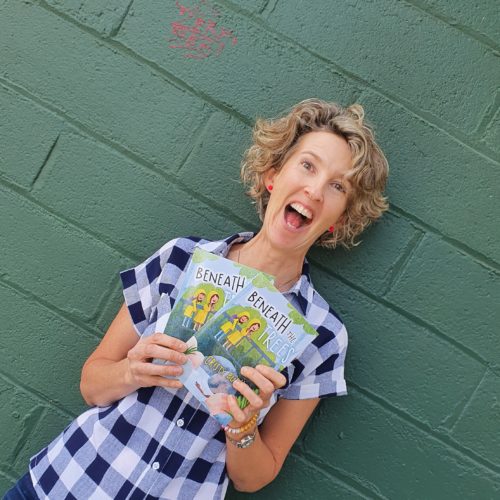Beneath the Trees author Cristy Burne explains her top five reasons why the platypus is weird but cool

In 2019, I had the chance to travel to Eungella National Park in Queensland to see wild platypus. I wasn’t planning to write an adventure novel starring a monotreme … And I wasn’t planning to spend a day battling mud and swollen rivers and carnivorous worms, either. But somehow, both of those things happened and Beneath the Trees was born.
Platypus are one of my absolute favourite animals, and not just because they star in my book. They’re just so peculiar! And so wonderful. Here are my top five reasons for loving platypus:
They’re mammals, but they lay eggs.
Mammals are animals that feed their young with milk – and the vast majority of mammals give birth to live young. All except monotremes. Monotremes are a strange group of primitive mammals that still lay eggs.
There are only five surviving species of monotreme: four species of echidna and just a single species of platypus. Basically, they’re more precious than gold.
They hunt with their eyes, ears and nose closed.
Platypus live on land, in underground burrows, but they hunt underwater. Just like kids at the beach, they close their eyes and block their noses when they dive. They even close their ears. So how do they manage to nab the yabbies and fish they love to eat? Using electroreception!
Their bill is super-sensitive to the electric fields that living things generate. Having a platypus bill is kind of like having a sixth sense. #Awesome
They’re venomous!
If you do see an injured platypus, don’t try to rescue it yourself. Call your local wildlife rescue volunteer. That will help protect the platypus, and you too. That’s because male platypus have hollow, venomous spurs on their hind legs. One jab with that baby, and you’re in for a long and painful night.
And guess what? There’s no antivenom.
Being stung by a platypus won’t kill you, but it will cause a long-lasting and excruciating pain that even morphine can’t dent. Goooo platypus!
They’re efficient.
Monotreme in Greek means ‘one hole’. So yes, like chickens, they’ve evolved to require just the one rear exit. Brilliant. Also, they don’t have a stomach. Just a gullet that connects directly to their intestines.
My favourite fact? Although they’re mammals, they don’t have nipples. Instead, the mother’s milk just sort of oozes from the skin on her belly and her babies just roll around having a good time. Could there be any better way to eat?
They’re cute!
‘The platypus was about the size of a kitten. It had thick, brown fur that looked soft and shiny, and webbed feet that splayed out like paddles. And it was swimming right at the river’s edge, like an adorable hairy toy boat.’ (Beneath the Trees, p. 14)
Platypus are sooo cute. Watching them is like peeking into the world before humans came along. They’re so busy, they’re so intent. I could watch these wondrously strange creatures float and dive and paddle for hours.
Millions of years ago, platypus had sharp teeth, lived underwater and grew around 100 cm long. Today, these ancient species are extinct. But our modern platypus still have a chance.
They’re secretive animals, so it’s tricky for scientists to work out how many we have, and where they all live. Which means it’s also tricky to work out if their numbers are decreasing. Anecdotal evidence says that, unfortunately, this is indeed the case.

I hope by reading about platypus and adventuring with Cam and her family into the rainforest, children everywhere can fall in love with this precious native species. I hope we can rally together as a nation and a planet to protect our natural habitats and ensure that children for generations to come can enjoy the thrill of watching wild platypus go about their busy business.
Beneath the Trees by Cristy Burne is available from all good bookstores and online.
Create your own platypus bookmark. Download Cristy’s free activity sheet.
Do you love this LEGO recreation of the Beneath The Trees cover? It was supplied by fellow Fremantle Press author HM Waugh.







